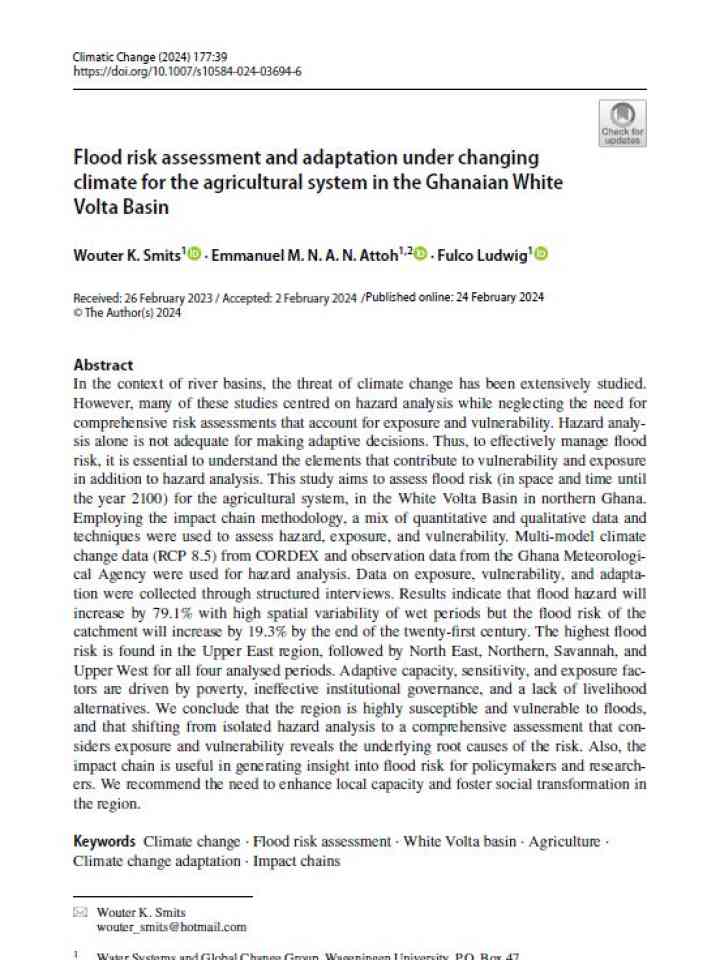Flood risk assessment and adaptation under changing climate for the agricultural system in the Ghanaian White Volta Basin
This study aims to assess flood risk (in space and time until the year 2100) for the agricultural system, in the White Volta Basin in northern Ghana. Employing the impact chain methodology, a mix of quantitative and qualitative data and techniques were used to assess hazard, exposure, and vulnerability. Multi-model climate change data (RCP 8.5) from CORDEX and observation data from the Ghana Meteorological Agency were used for hazard analysis. Data on exposure, vulnerability, and adaptation were collected through structured interviews.
Results indicate that flood hazard will increase by 79.1% with high spatial variability of wet periods but the flood risk of the catchment will increase by 19.3% by the end of the twenty-first century. The highest flood risk is found in the Upper East region, followed by North East, Northern, Savannah, and Upper West for all four analysed periods. Adaptive capacity, sensitivity, and exposure factors are driven by poverty, ineffective institutional governance, and a lack of livelihood alternatives.
Explore further
